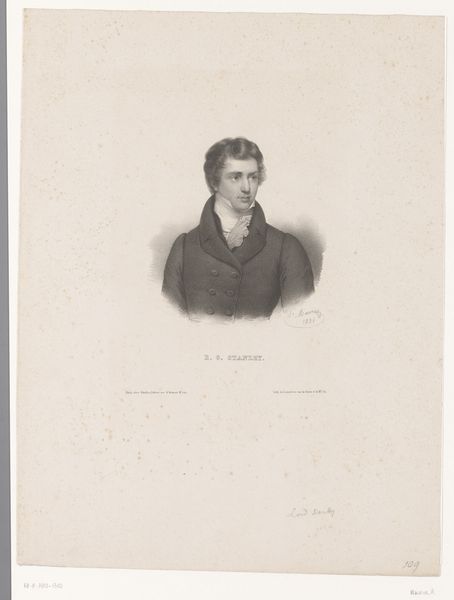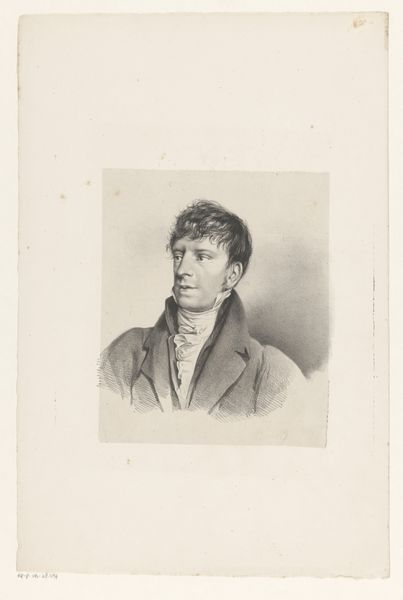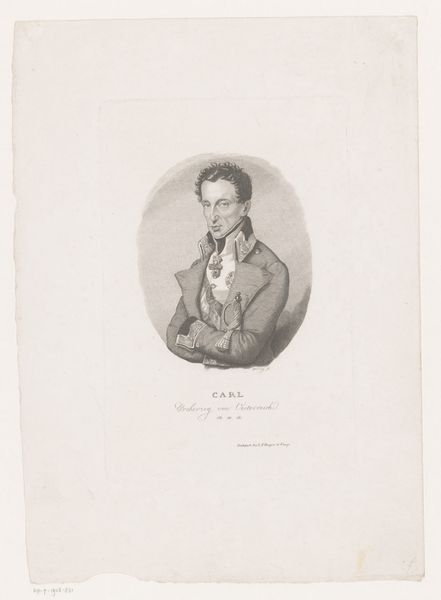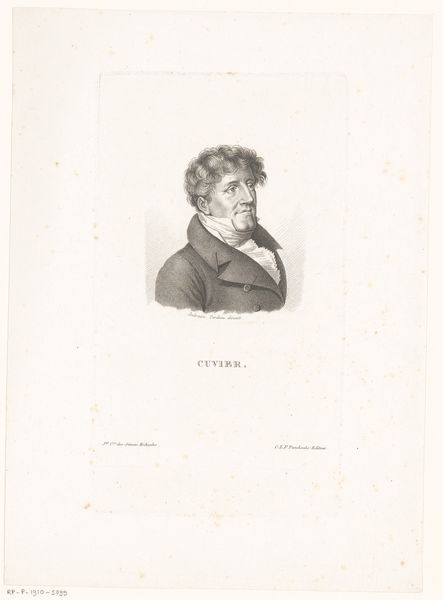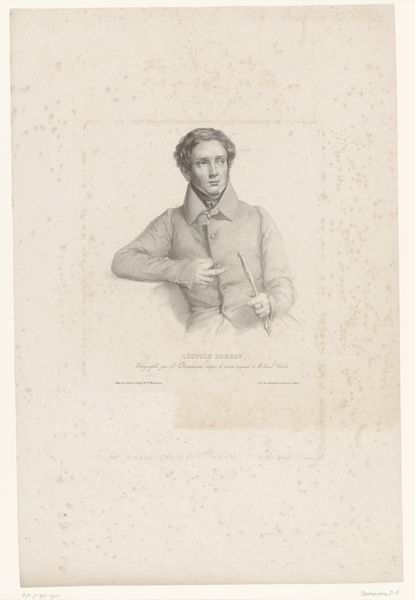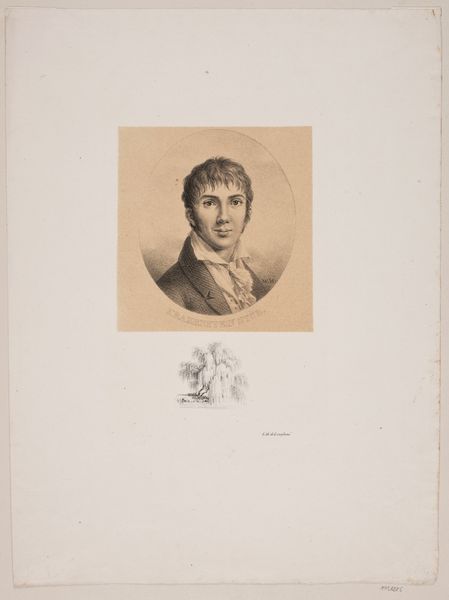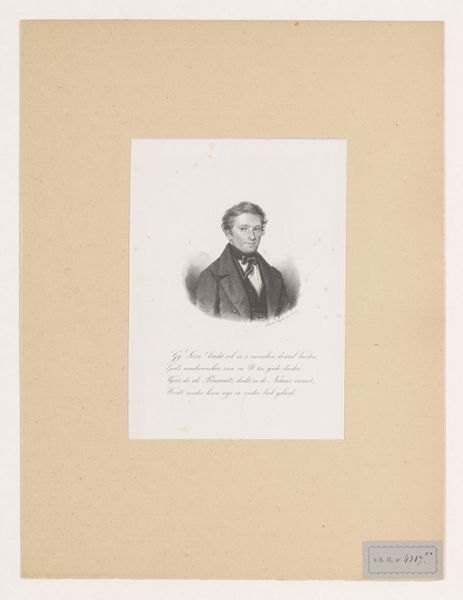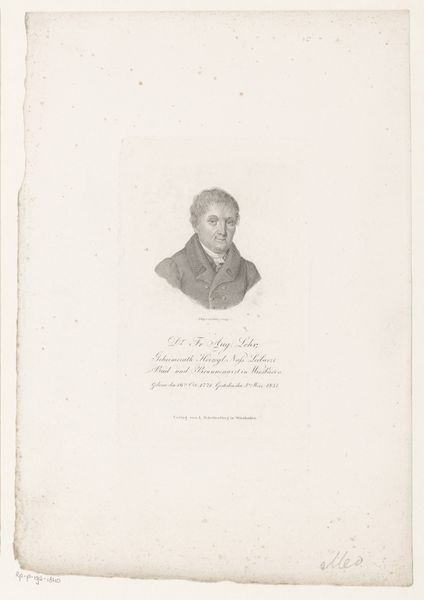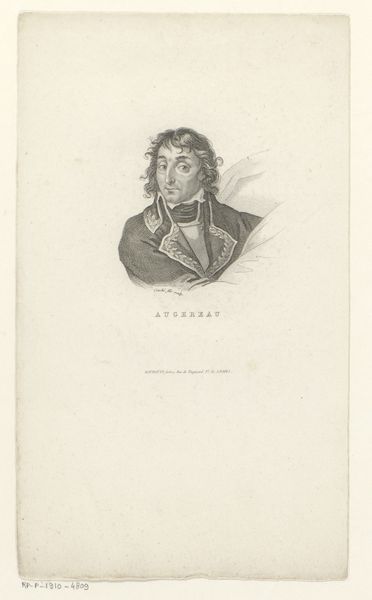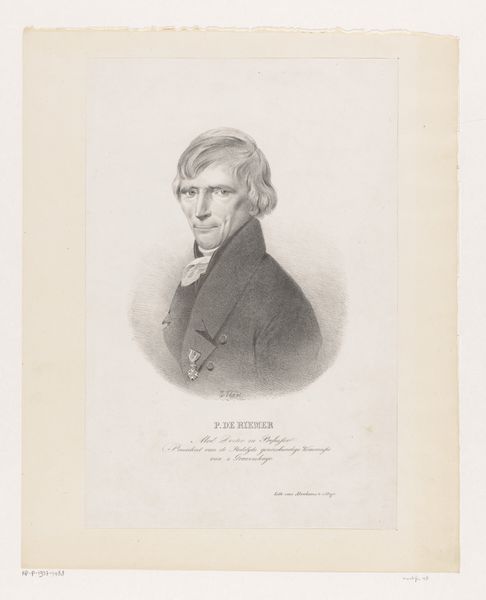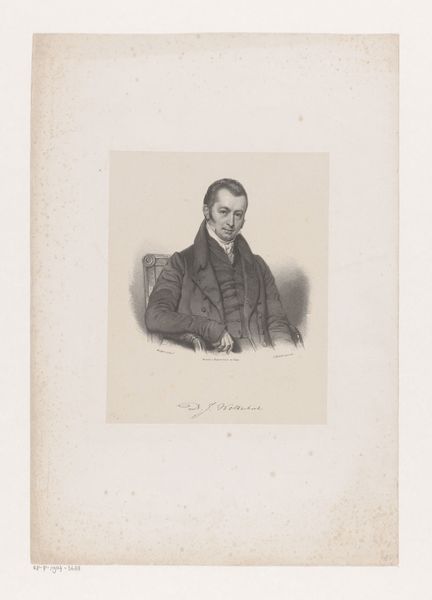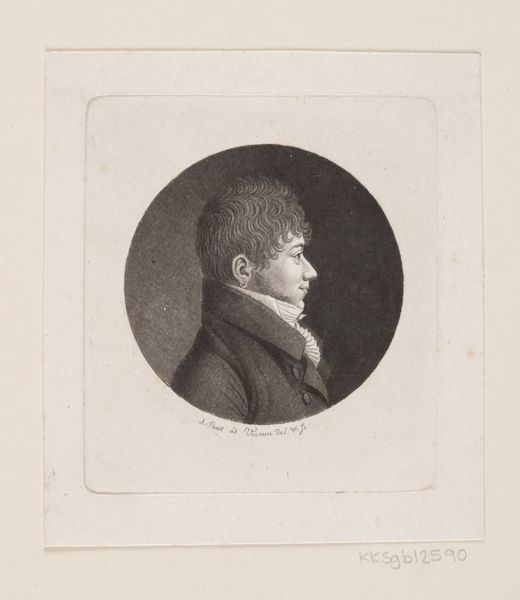
drawing, engraving
#
portrait
#
pencil drawn
#
drawing
#
pencil sketch
#
pencil drawing
#
pencil work
#
history-painting
#
academic-art
#
engraving
#
realism
Dimensions: height 351 mm, width 268 mm
Copyright: Rijks Museum: Open Domain
Curator: This engraving, "Portret van D.W. Veldhorst," crafted around 1830 by Leendert (I) Springer, immediately gives us a glimpse into the world of early 19th-century portraiture. Editor: My first impression? He looks…tormented, almost melodramatic! That hand on his forehead – is he shielding his eyes or lamenting a lost love? Curator: The gesture indeed speaks volumes. While it may seem overly theatrical to our eyes, such postures were commonly employed in portraiture to convey certain sensibilities: contemplation, mourning, or even intellectual weight. This pose, especially combined with the gaze, speaks of inner reflection. Editor: So, it’s less about needing an aspirin and more about pondering existential dread? Though, to be fair, I sometimes make the same gesture when I get a creative block. It’s amazing how a pose can carry different cultural loads. Curator: Precisely. Moreover, consider the materiality. An engraving possesses an inherent reproducibility and allowed the image to circulate widely. Therefore, it became important for these works to portray social ideals. The level of detail in the lines and hatching helps shape light and shadow, ultimately contributing to the figure's overall demeanor and sense of psychological presence. Editor: Yes, you can almost feel the scratching of the engraver’s tool, carefully etching those lines of worry – or reflection, as you insist! – onto his brow. There's a certain starkness in the monochrome that heightens the sense of drama, though. Almost as if everything extraneous has been stripped away. Curator: Think about the function, though: these engravings were rarely ‘art for art's sake.’ They commemorated, memorialized, solidified social standing through likeness. In that sense, Veldhorst, whoever he was, sought a level of immortality. Editor: Okay, that I can appreciate! It does lend a touch of humanity to all that seriousness, that eternal performance for posterity. Who knew a headache pose could contain such depths? Curator: Absolutely, looking at it again now, perhaps the artist captured an individual in the midst of thought, a universal experience made particular through art. Editor: So it’s both a historical record and, strangely, something deeply personal, eternally relevant! Well, that changes my whole perspective on the picture; that pose makes sense, it contains those emotions, a lot to carry indeed.
Comments
No comments
Be the first to comment and join the conversation on the ultimate creative platform.
